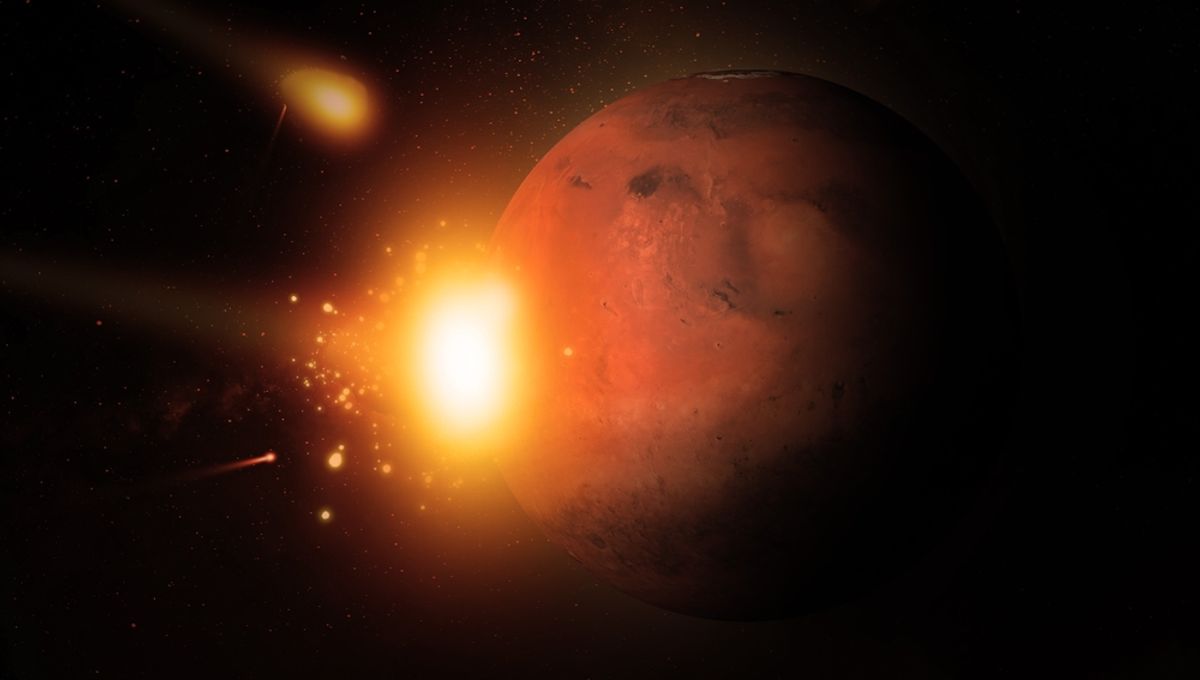
When the Viking 1 lander arrived on Mars it carried high hopes for a golden era in space exploration. What it found was puzzling, and the weak evidence for life disappointing. However, a new analysis suggests it may have been sitting in the aftermath of one of the most dramatic events in Solar System history.
Chryse Planitia, where Viking 1 landed, was chosen for the signs of water erosion such as deep chasms. As one of the lowest points on the Martian surface, its rivers from nearby highlands may have kept it filled with water long after most of the rest of Mars dried out.
Nevertheless, Viking 1 failed to find some of the anticipated evidence for an ancient Martian ocean, and subsequent missions haven’t always filled the gap. Forty years later, it was proposed two planet-scale tsunamis may have swept some of these indications away. Now, a paper in Scientific Reports by the team who first raised the megatsunami hypothesis proposes the source of the earlier tsunami might be a crater not that distant from the landing site.
The megatsunami hypothesis was proposed to explain the apparent absence of a Martian shoreline at a consistent elevation, which would be expected if Mars once had an ocean. Without tectonic plates, Mars would be unlikely to trigger such events internally, leaving asteroid impacts as the likely cause.
On Earth, tectonic movements and erosion by wind and water have erased all craters older than 2.2 billion years. On Mars, however, craters last longer, and the paper makes the case that a 110-kilometer-wide (70 mile) crater dates back to 3.4 billion years ago, the time when Mars was still wet.
The crater has been named Pohl, after the science fiction writer, by the International Astronomical Union. It lies 900 kilometers (500 miles) northeast of Viking’s landing site.
The authors point to evidence Pohl was made by an asteroid landing in water, not dry land. Its timing is right to have created the earlier tsunami, although it’s three times larger than imagined in previous work. Indeed, Pohl is larger than all but three confirmed impact sites on Earth, one of them Chicxulub. Depending on the type of resistance the asteroid would have encountered from the strength of the ground, it would have been either 3 or 9 kilometers (1.9 or 5.6 miles) wide, the authors conclude.
Chryse Planitia was close enough to the impact site that ejecta would have rained down upon it, explaining some of the features Viking 1 found, such as the diversity of nearby boulders and possible mud volcanoes. Modeling suggests the tsunami’s height exceeded the depth of the Martian ocean at the time.
Viking 1 showed a Mars less promising for life than had been hoped, although its capturing of methane has been a long-term subject of contention. This was one of many factors that led to a scaling back and delay of plans for future robot and human missions. However, if the paper is right, the site may be a better place to search for life than we thought.
For one thing, the hydrothermal heat created by Pohl’s formation would have been a great place for life to thrive safely beneath the surface for at least 300,000 years. The later, smaller, megatsunami may have carried some of this evidence to Chryse Planitia. A return there, or to Pohl itself, might be a priority soon.
The paper is published in Scientific Reports.
Source Link: Dino-Killer Scale Asteroid Impact Might Have Caused Martian Megatsunami